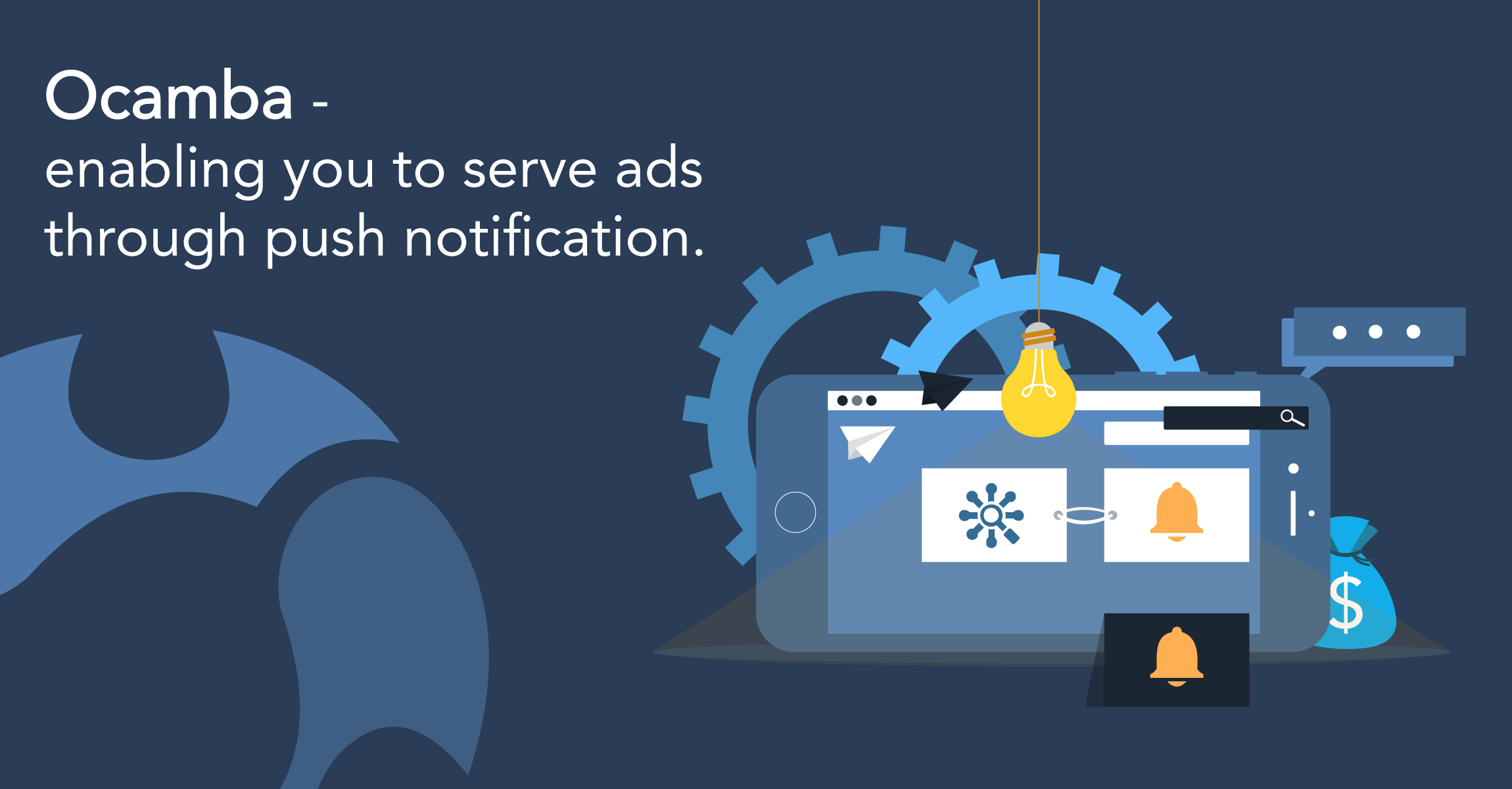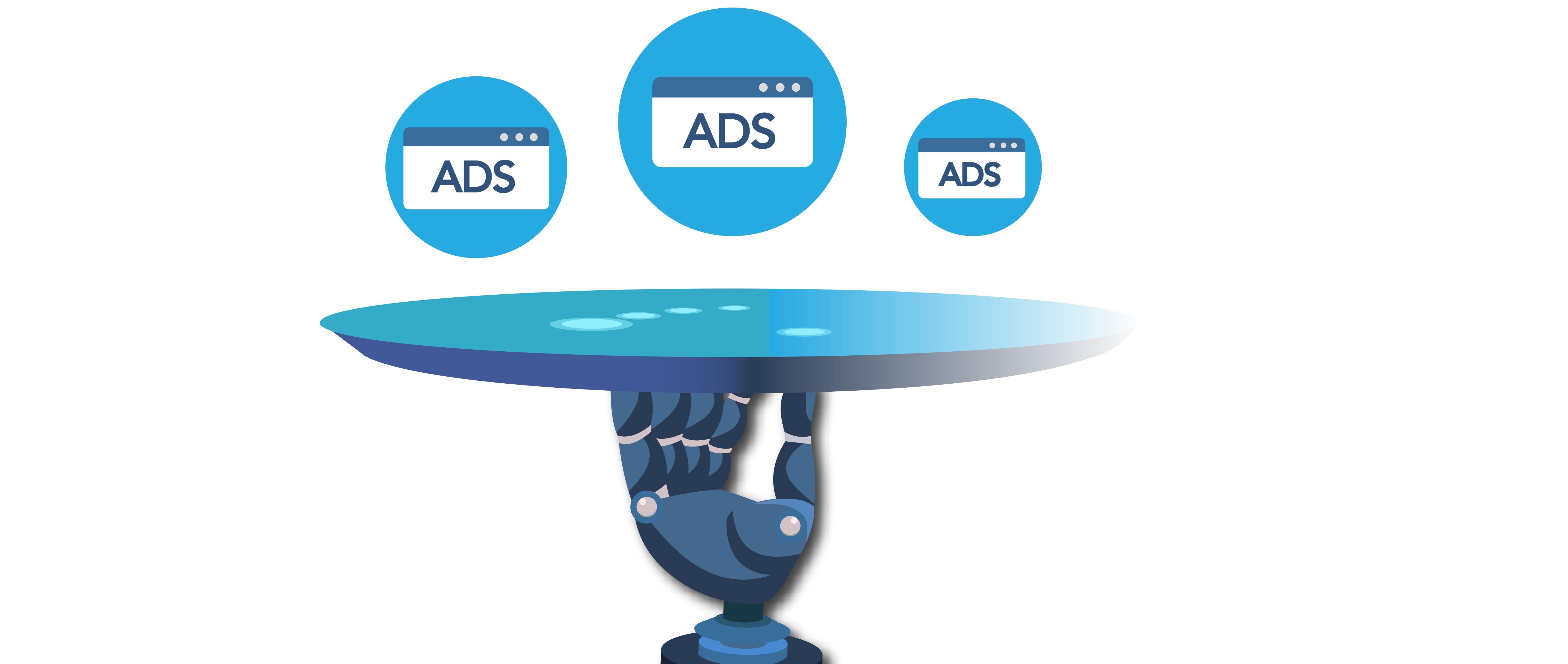Ocamba’s revolutionary Ad serving through push notifications feature

Even though today’s ad serving platforms rely on advanced technologies such as real-time bidding, use a complex network of ad exchanges, and engage users with push notifications, navigating through programmatic advertising can be overwhelming. You have to handle multiple software and huge data sets.
User experience needs to be monitored closely. Targeting must go into detail. Contacting people with direct alerts has to be relevant and timely. A single mistake could mean a difference between a successful advertising campaign and a total failure. And you have to keep an eye on the entire process by continually changing tabs. In other words, it requires a whole lot of work.
Not entirely satisfied with where the history of advertising automation has left us, we decided it was time to raise the bar by merging all the benefits of programmatic marketing practices in a single software.
That’s when the idea of Ocamba was born. Here’s what we did to revolutionize the industry and how it works.
Ad serving technologies: AdExchange and Real-time bidding
As you probably know by now, ad serving technology is a mean for placing advertisements in an online environment. It’s backed up by server handled bidding (real-time bidding) and the exchange of media inventories from multiple ad networks (ad exchange).
Real-time bidding is a fully automated server-to-server auction process, which manages the buying and selling of the advertising inventory on a per-impression basis.
In other words, RTB is an efficient replacement of direct negotiations between publishers and advertisers, done entirely in a programmatic setting, through data exchange between SSP (Supply Side Platform) and DSP (Demand Side Platform).
To put this in perspective, we’ll be using the terms publisher for the supply-side platform, and advertiser for the demand-side platform. The auction happens in 200 milliseconds, just before the publisher’s site gets loaded. A user triggers it by merely visiting a website in question.
Instantaneously, the request is sent to an ad exchange platform, alerting advertisers to place their bids on the particular inventory (the nominal price they are prepared to offer so their ad would be displayed to a specific page). The interested buyers send their offers. The one with the highest bid wins the auction, having his ad shown to the user who triggered the whole process in the first place. But that’s not it.
Because the entire auction is organized around a single user, his preferences have a crucial role in how the whole system is functioning. That’s why only relevant impressions get displayed.
Example: if the publisher knows the user is located in Alaska, he won’t invite the sunscreen manufacturer to place the bid in the first place, not to waste anyone’s time and money (unless he knows the particular user is planning a summer vacation). Simply said, the ad serving technology is an efficient way of monetizing user behavioral data.

Push notifications
On the other side of the marketing automation spectrum lies another method for engaging users and turning them into customers: push notifications. Push notifications are little pop-up messages displayed on a user’s device, usually prompting him to take a particular action.
Although they take many forms and appearances, their unique power lies in the ability to offer a direct communication pipeline to your users. Many advertisers are now seeing them as a more efficient substitute for emails and SMS messages, especially when it comes to immediate sales offers.
To wrap it up, both RTB and push messages are equally important tools - it’s just a matter of estimating which one is best suited in a unique advertising situation.

The synergy of AdExchange and Push: What if you can have them both at once?
Ocamba has two Apps:
- AdExchange and
- Push.
This enables you to benefit both from ad exchange technology and push marketing.
However, its uniqueness lies in the next generation synergy of the two: in enabling you to serve ads through push notifications, all from a single platform connected to multiple ad exchanges. Through a unique set of features, publishers are now able to invite advertisers to automatically bid on sending a push notification to the site’s audience, while advertisers are given the opportunity to expand the ad reach significantly.
Once again, it’s a win-win-win situation, this time with a single more gain in your budget. For example, let’s say our before-mentioned user from Alaska runs a blog about healthy living and exercise. Don’t you think that a company that sells sports equipment would gladly pay to get its regular readers to engage with its brand? Or, by contrast - if you were that sports equipment company - what better place would you go to find a more valuable audience, which you can contact directly?
But that’s just a short glimpse of what you can do when you have all of the valuable marketing tools in a single software. As we said, an all-in-one user-friendly interface can simplify many things that you would otherwise have to do in separate places: managing campaigns, audience monitoring, advanced targeting and real-time reporting.
This ease of using Ocamba lets you insert and unpack the operational data without having to invest much time or effort. Your network of partners is accessible after a single login, while your cooperation’s complex monitoring is handled under a single Ocamba account.
Benefits for publishers
As we said, the RTB supply-side platform (SSP) is in charge of organizing the auction and displaying the highest bidder advertisement. It’s also known as the yield optimization platform, implying a powerful profit acquisition tool.
SSP connects site owners and app developers to multiple DSPs, ad networks, and ad exchanges, allowing them to sell their Ad space at the highest possible price. The Ocamba’s specific merit for publishers is a more profitable monetization of both advertising inventory and your audience. Not only can you sell a portion of your online real estate, but you can also profit from knowing your audience and using that knowledge to send them an advertiser’s relevant push messages.
The best part is, of course, complete control of the process - you get to choose price floors, frequency of the pushes, even whether you’d like to show your trademark at all to the end- user. To put it simply, you get to be the sole person in charge.
Benefits for advertisers
Ever since automated advertising kicked off, marketers were aware that their budgets needed to follow the audience.
Ocamba’s synergy of AdEx and Push modules translates this into reaching the ultra-specific audience. By using our advanced tracking technology, advertisers can micro-target even the most unique users.
For the sake of demonstration, let’s get back to our user from Alaska. Say he went to a museum, installed the museum app on the entrance, and turned Bluetooth on (connected to the wireless beacon transmitters). He approaches a specific painting and receives a push notification (sent from Ocamba) with detailed info on a particular showpiece.
Conclusion
It’s not just about advertising anymore. It’s about taking the user experience to a higher level. And people remember that.
Naturally, it all eventually translates into boosting your (or/and your client’s) ROI (return of investment). Furthermore, by using the publisher’s precious behavioral data, you have the chance to cherry-pick your investments, control the price floors, and only bid for those that address real-time customer needs.
To put it in an immediate context, you could be selling shoes to people currently walking barefoot.
That’s how powerful Ocamba’s RTB for push notifications can be. No push is wasted.















 www.ocamba.com
www.ocamba.com